2015-06-02 By Robbin Laird
The Royal Navy (RN) is returning the large deck carrier business after many years absence.
This means that the RN while shaping the concepts of operations for it new carrier and the RAF for the new carrier air wing, the two services are not constrained by the immediate past.
They are reinventing their approach to carrier airpower; not reshaping its carriers to deal simply with the addition of new aircraft to the carrier air deck, as is the US Navy.
Secretary Wynne once noted that a good way to rethink the role of the large deck carrier would be to clear the deck of its legacy airwing and imagine what a fifth generation enabled carrier might look like.
The RN and the RAF as the closest proximity of any country going to do that.
But this will not be easy, for the RN and the RAF will have to rethink their legacy approaches, and shape ways to work more effectively together as an embarked force.
For the latest update on the progress in building the new UK carriers, see the following newsletter from the Carrier Alliance published in November 2015:
This will involve significant cultural change as well, with the RN having operated largely as a “frigate navy for the past few years,” according to a senior RN official.
And for the RAF moving from a land-based mentality and the use of legacy aircraft will require a leap into operating a “fifth generation enabled carrier” and finding ways to integrate that capability within the overall air combat profile of the RAF.
In other words, it is not just about adding a ship or adding an aircraft.
It is about significant cultural change and the overall transformation of UK forces to a 21st Century paradigm of operations.
Much of this was evident from a visit to the ship and discussions aboard the ship. But in an interview conducted at the Ministry of Defence Main Building in Whitehall the day after the visit, a discussion with the RN and RAF provided significant detail and perspectives on the paradigm shift.
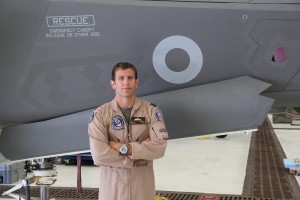
The discussion at MoD was with two Royal Navy personnel and one RAF officer.
Chris Alcock Programme Manager Queen Elizabeth Carriers at Royal Navy was joined by Commander Nick Walker and RAF Group Captain Paul Godfrey in the interview.
Captain Chris Alcock is Head of the Carrier Strike Division in Navy Command Headquarters. He is Programme Manager for the QEC Carriers and also responsible for capability Integration of the Carrier Air Wing into the platform, specifically LII F35B, Merlin Mk2 and Crows nest.
Commander Nick Walker is currently serving as the Chief of Staff Carrier Strike in the Carrier Strike and Aviation Division within Navy Command Headquarters in Portsmouth. The role involves coordinating and brigading the activities of the Carrier Strike Team as they interact with a plethora of organizations in Defence and industry to manage the Queen Elizabeth Class project and bring the aircraft carriers into service.
Group Captain Paul Godfrey is a key RAF officer involved with F 35 Lightning II Entry into Service. He has extensive flight experience with Harrier, Typhoon and F-16. After his current assignment, he will be given command of a Typhoon Main Operating Base which position him well to support the land and sea based air integration efforts of the RAF.
Question: How demanding a shift in RN thinking is the introduction of this ship?
Alcock: It is an important shift.
There are a lot of people that have never been on a carrier before, and the Royal Navy has been very much, since the demise of the carriers, has been a very much a frigate Navy.
We are generating a new Maritime Task Force concept (MTF) to shape the concept of operations going forward.
This clearly draws on elements of the past, but requires a fresh think as well.
People say it’s not all about the carrier, but it is all about the carrier, because that will be the center of gravity around which we will provide all the other enablers for the other elements of the task group.
The constitution of the task group is critical to depending on what we do with the carrier but the carrier and its air wing are the centerpiece enabling the entire task force.
We have worked closely with the USN and the USMC in the regeneration of Carrier Strike and the close working relationship has been hugely appreciated and also the work they have done for us and with us in support of this aim.
Question: The RN and the RAF have been visiting places like Nellis, Fallon and Yuma and I would assume that your are looking at cross learning and cross transformation processes?
Godfrey: Very much so.
And we are training with the Marines and the other air services as we prepare to embark our F-35s aboard the carrier in three years time.
And we are very much using this time to think through the marriage between the carrier and the airwing and are looking closely at what the Marines and the US Navy are doing as well.
In this three year period that we’ve got before we’re bringing our F-35B’s back to the U.K, in the four year period we’ve got before we declare a carrier strike capability 2020, we can have a really good look at how do we want to do this?
And we are looking at a revolutionary way of doing it, rather than an evolutionary way of doing it.
Alcock: And we are looking at significant innovations different from the US as well.
We will not generate the sortie rate of as many aircraft as a large deck USN carrier, but we will generate significant combat effects.
Our carrier is designed to operate 24/7 and will not operate with catapults and traps.
We are looking to use the F-35B and its unique operational capabilities to give us a significant combat effect.
I think we will just do things differently and we have been studying the USN model as to how they operate their CVN from Japan.
Also maintenance is key and this will be an important factor for the platforms – serviceability and availability gives the UK greater flexibility.
In addition we have been working closely with USMC and gaining insight into SGR’s and deck cycles.
Question: We argue that no platform fights alone; this is obviously true in terms of the carrier, which is both and enabled and enabling platform, notably with regard to its carrier air wing.
What is some of the thinking in the RN about the potential evolutions?
Alcock: As I said earlier, we have not been defined by the carrier in our Navy and some of the newer assets will be rethought with the introduction of the carrier.
With the advent of the carrier we will need to re think doctrine, tactics and training.
There will be much work between elements of the CAG specifically interaction with Merlin Crows Nest and F35B but also our T45 destroyers will work extremely closely with F35B and be a great enabler in tactical development.
We need to explore the boundaries of what we can do as we leverage the carrier with regard to our other force assets, Navy, Army and Air Force.
The good thing is that a lot of people involved in the process have open minds about thinking through the process of change.
Question: And presumably the new destroyer program designed to replace Type 45 can be defined in such a way as to leverage the carrier and to be built into the carrier enabling capabilities as well?
Alcock: That is a good point.
New platforms will need to embrace the new warfare disciplines associated with the Carrier and the lessons learnt will need to be embedded in the design and operability of any replacement Platforms.
Question: How does this evolving capability affect a possible rethink about the way ahead for the forces?
Walker: This evolving capability will give the decision maker a lot of flexible tools to respond or prepare for crises.
The Maritime Task Force can be well integrated with land based air but does not need a lot of forward ground presence to generate combat effects.
This can give decision makers significant flexibility with regard to a crisis or to have the ability to move to crises rather than having to generate force build up in a particular place in order to intervene.
Question: A key aspect to thinking about the flexibility engendered by the carrier led Maritime Task Force can come from shaping effective C2 for an intervention force.
What is your thinking and approach with regard to the C2- enabled carrier maritime task force?
Alcock: We have spent a great deal of time thinking through C2 over the past few months, and C2 in terms of operating from benign to high combat environments.
The inbuilt working relationship between the RN and the RAF engendered by the carrier is an important forge point to get the two services to think through 21st century technologies and approaches to C2.
And given the carrier and the MTG will be used not just as national assets but as coalition ones, then working the coalition piece of this is crucial as well.
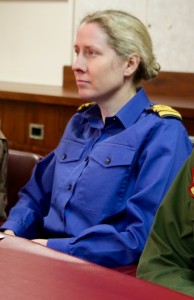
Question: Could we return to the challenge of adaptation posed by the carrier to the RN.
How do you view this challenge?
Alcock: In part it is about the carrier; and in part is about the F-35. A core challenge is to get the RN understand what fifth generation is all about.
Do we understand what 5th gen means?
Do we understand what the carrier can do? Do we understand how type 45 or new type 26 will integrate into the MTG and what we can then bring to other coalition partners?
That is where the hard work is going to come and actually getting that out to people to incorporate in their operations and train and exercise the capability.
We clearly face a challenge in bringing the various strands of innovation and transformation together into the operational crescendo necessary to make the MTF fully effective.
Question: A number of British allies are in throes of change as well, ranging from the Aussies to Italians.
Clearly, you are bringing a powerful evolving template to the process of shaping 21st century combat approaches.
You’re part of the club trying to figure out how to do combat differently moving forward in the 21st century.
Does that make sense?
Walker: It does.
That is one of the strengths which comes from the various working groups we have within MoD and with core allies.
We can both learn and contribute to the overall learning process for coalition partners.
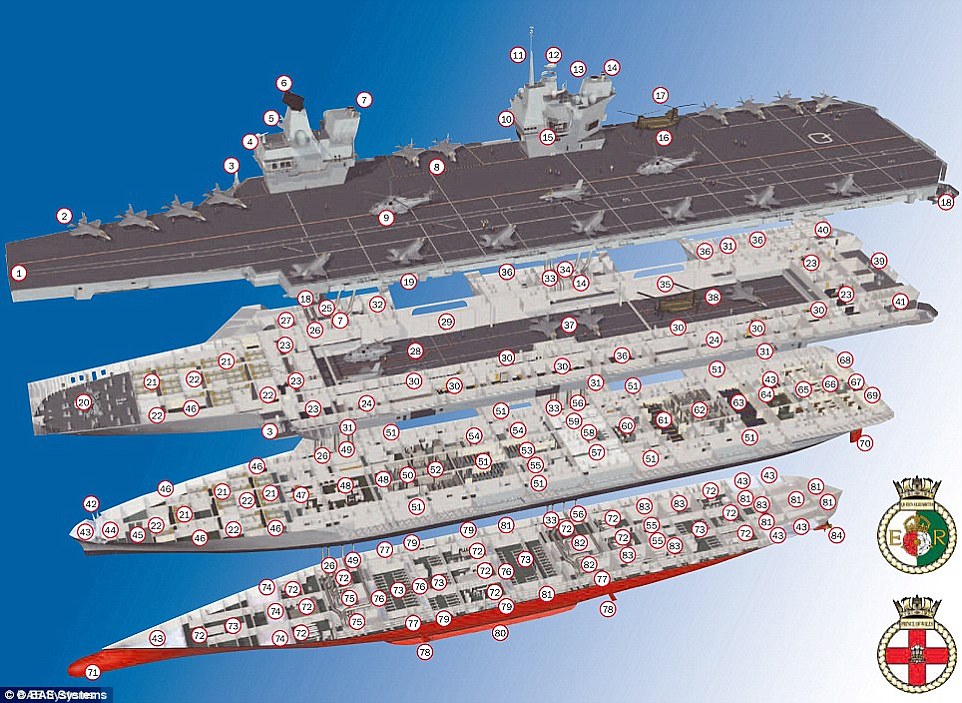
The two graphics below are credited to the same source above.
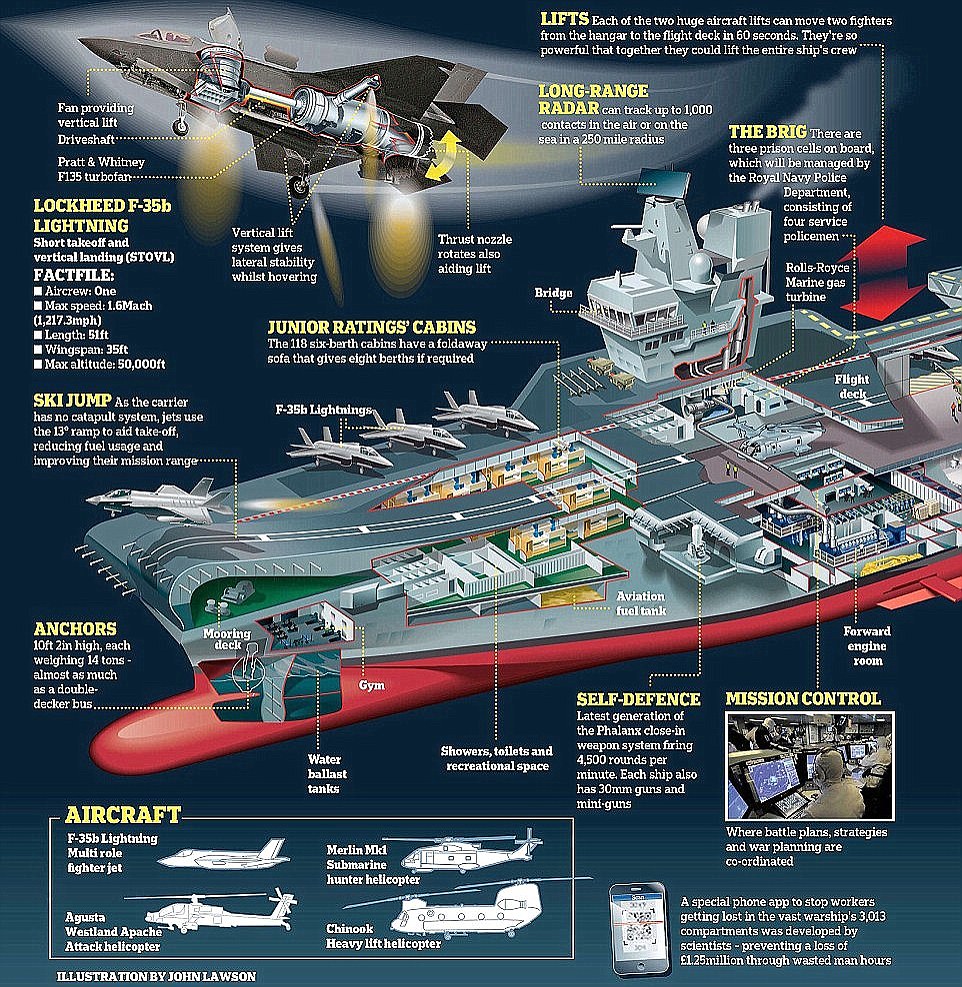
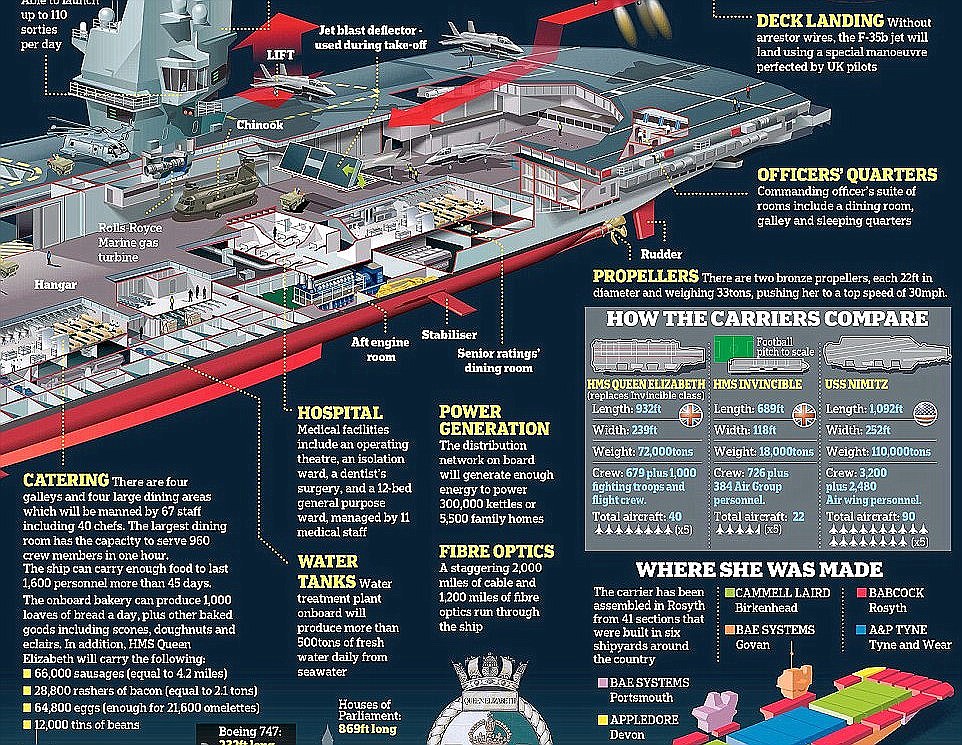
At the end of March 2015, Second Line of Defense visited HMS Queen Elizabeth in Scotland.
These photos were shot during the visit by the RN/RAF team and are credited to them.
- The first photo shows the ski jump on the flight deck for the F-35B. The second photo is of the ski jump and a shot of the Hood Dock from which HMS Hood left to go after Bismarck and to which HMS Prince of Wales returned after the Bismarck was sunk.
- The third photo is shot from the ski jump and looks down at the entire flight deck.
- The fourth photo shows Robbin Laird with one of the HMS Queen Elizabeth team at the end of the flight deck.
- The fifth photo shows several members of the team who provided the tour of the ship.
- The sixth, seventh and eighth photos show the islands aboard the flight deck.
- The ninth photo provides another shot of the flight deck; the tenth photo is a shot of the reconfigurable C2 spaces aboard the ship;; the eleventh photo shows the massive crane used in the course of construction.
- And the final photo shows those who provided the tour for whom more than thanks are due for providing insights into a key element of evolving air and sea power.
The British are working closely with the USN-USMC team.
Their pilots and maintainers are at MCAS Beaufort and at Edwards AFB as part of the ongoing multiple year modernization process entailed with a software upgradeable aircraft
They were closely involved with the recent USS WASP operational trials as well.
As Lt. Cdr. Kitchen put it with regard to the working process:
The F-35 can be surrounded by myth and legend.
But it is a real testimony to the capabilities of the maintainers of the Royal Navy, the Royal Air Force and the USMC to adapt to the new technological challenges.
Their knowledge of aircraft systems is now being applied to a new air system and taking steps forward into the unknown.
It is a testament to the professionalism of these maintainers that they are just getting on with the job of making this aircraft work.
Every single person involved in this detachment are passionate about this aircraft and not just because it is a sexy looking aircraft but want to see it working in every operational environment.


